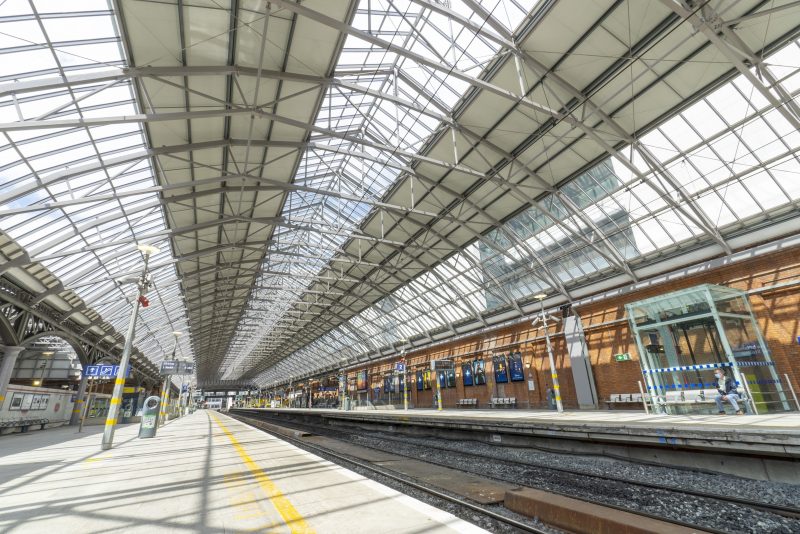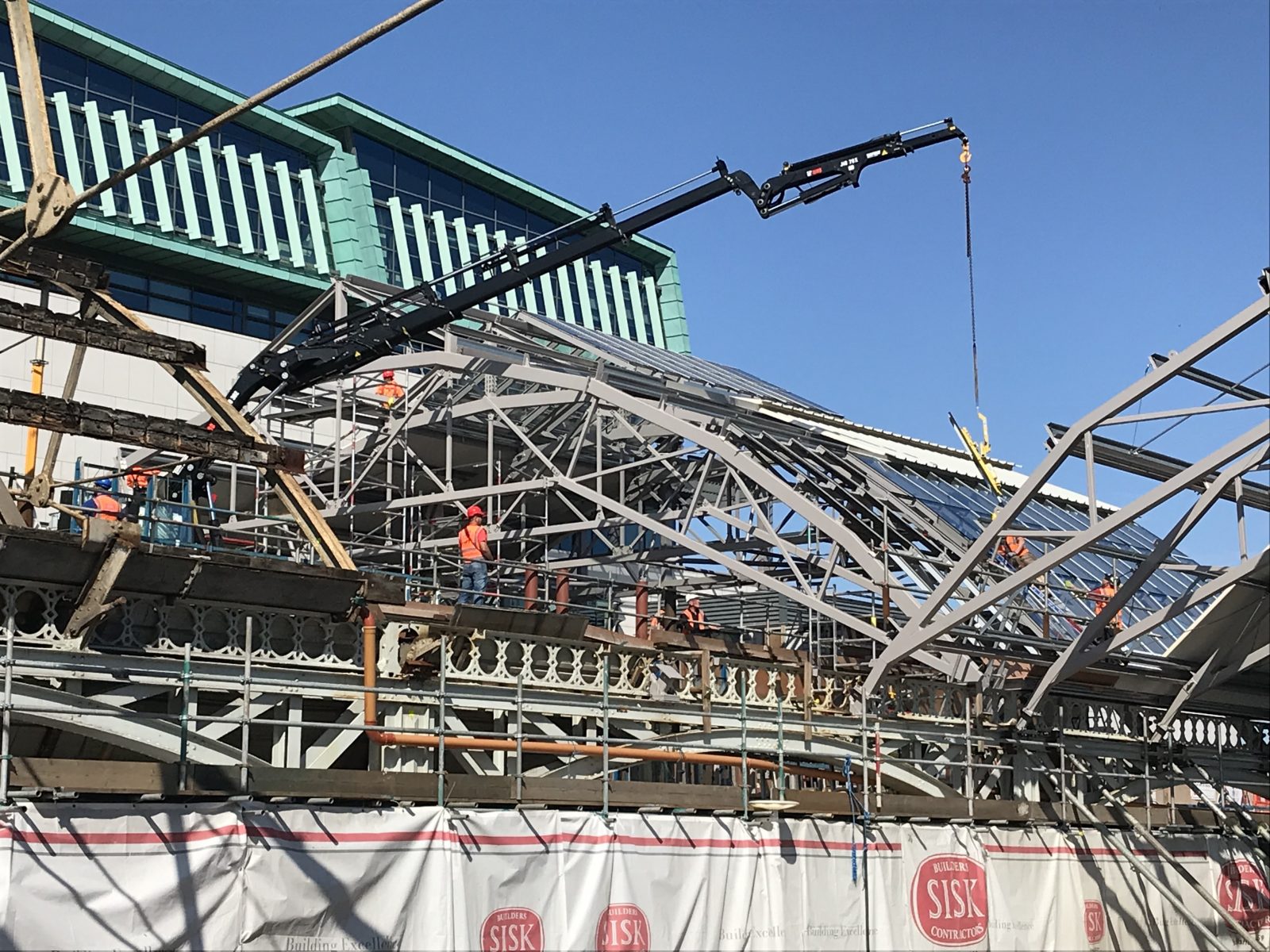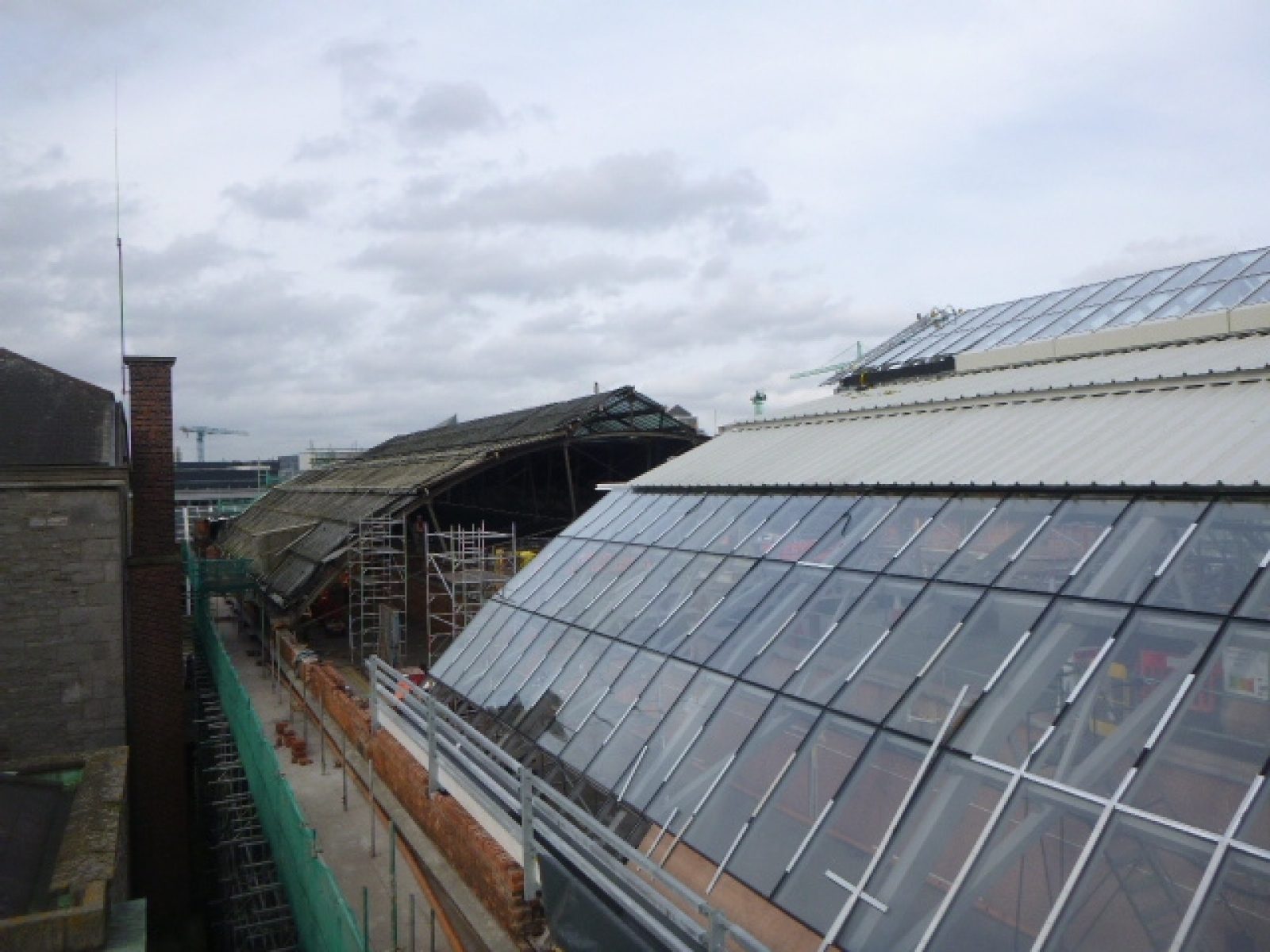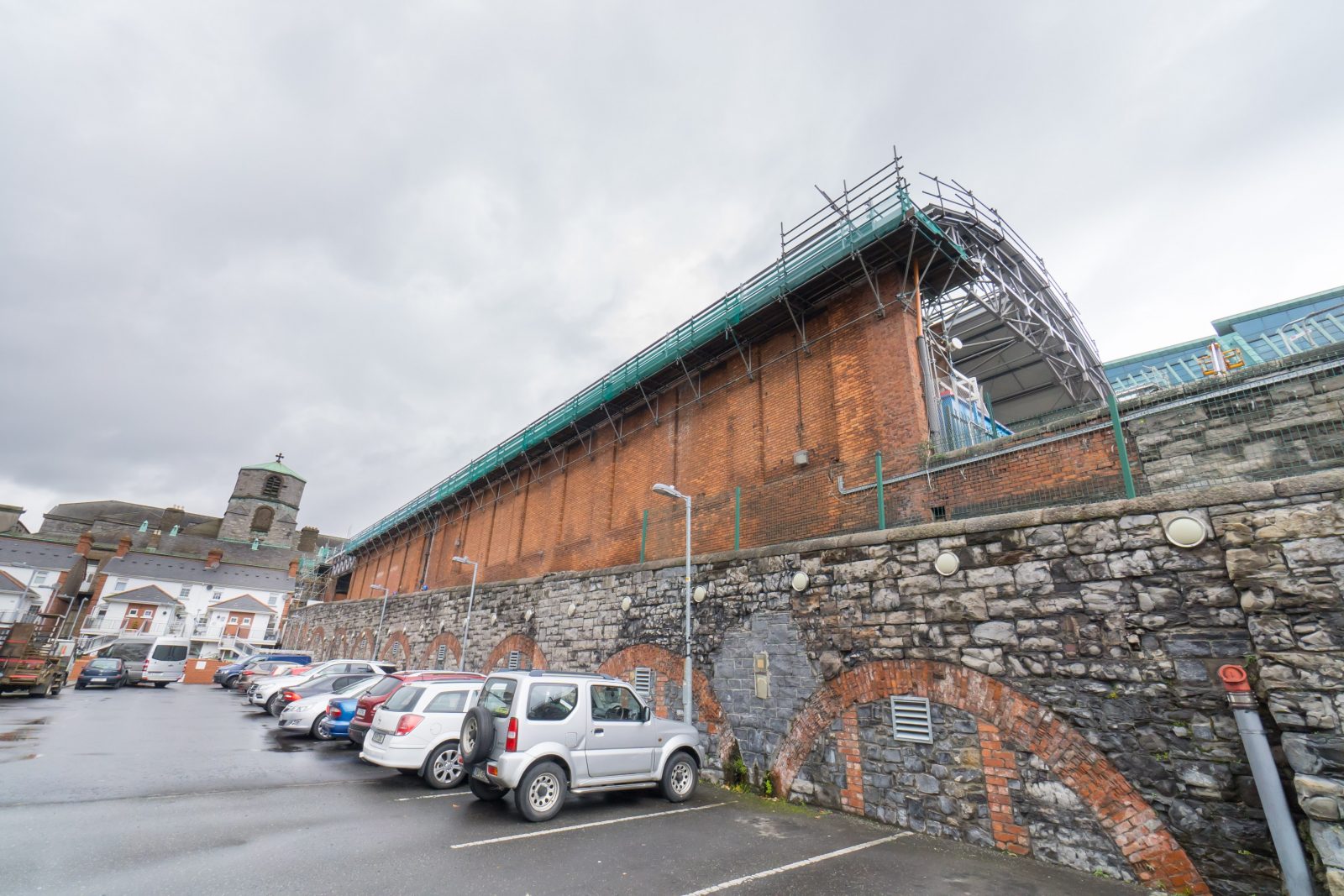Ireland's busiest commuter train station
The Pearse Roof project involved the replacement of the existing roofs on both the main train hall and carpark of Pearse Railway Station in Dublin 2.
The main train hall is 157 metres in length with a single span of almost 30 metres. The station itself is a DART (Dublin Area Rapid Transport) station and holds the title of busiest commuter station in Ireland with almost 35,000 passengers per day passing through it at peak.
It was first built in 1834 with the roof being constructed in the 1870’s. It was this roof that was replaced during the project while keeping the station operational at all times.
"It was a career-defining job, everybody relished working on a job like this, because of the engineering and the technical challenge."
Temporary Works
The temporary works structure was a major feature of the Pearse Roof Project. The concept was realised upon contract award, when all the challenges associated with the tasks ahead were evaluated by the site team. The ability to work during the day was a key driver along with the logistical challenges of getting materials into site.
A further consideration was the restrictions that the conventional scaffold and craneage would bring to the operation.
The site team then looked at a creating a moveable platform on top with a knuckle boom crane on the centre section capable of lifting all glazing and truss components into position from the back spans.
The temporary works platform once constructed, allowed much of the roof structure to be replaced during normal working hours.
“We got a lot of very positive feedback from the public as the temporary crash deck was being removed and the roof was revealed.”
Pearse Station was built in the 1830s and the original roof dated back to the 1880s
Combining the old with new technology
In-house expertise
The site team engaged the Sisk in-house Temporary Works department to assist in this process. A detailed survey of the internal station was completed using traditional surveying methods to validate a previously completed point cloud survey on behalf of Iarnród Éireann.
Navisworks was then used to create a 3D model of the structure with the member sizes and lengths then finalised. The model assisted in detecting some of the clashes on the platforms with existing station infrastructure.
The model assisted the fabricator of the structure when it was released in approved stages directly to their connection designer. The model was adapted directly by them resulting in huge time savings on the production and approval of fabrication drawings.
Stakeholder Management
Pearse Station is bounded by Trinity College Dublin, Goldsmith Hall, St Andrew’s Church and the Boyne Street Residential Complex. The station is also home to a number of small independent retailers at the main entrance from Westland Row and on both station platforms.
The stakeholders’ concerns were addressed via regular meetings chaired by a community liaison officer from Iarnród Éireann. This forum provided the stakeholders a mechanism where the project team were able to engage and pro-actively plan activities with the affected stakeholders in mind.
Logistics
Pearse Station is located in the city centre with two restrictive entrances. The site deliveries and plant selection needed careful consideration to accommodate these difficult accesses. Due to the limited space on site, a JIT (Just in Time) procedure was used for deliveries for all materials.






